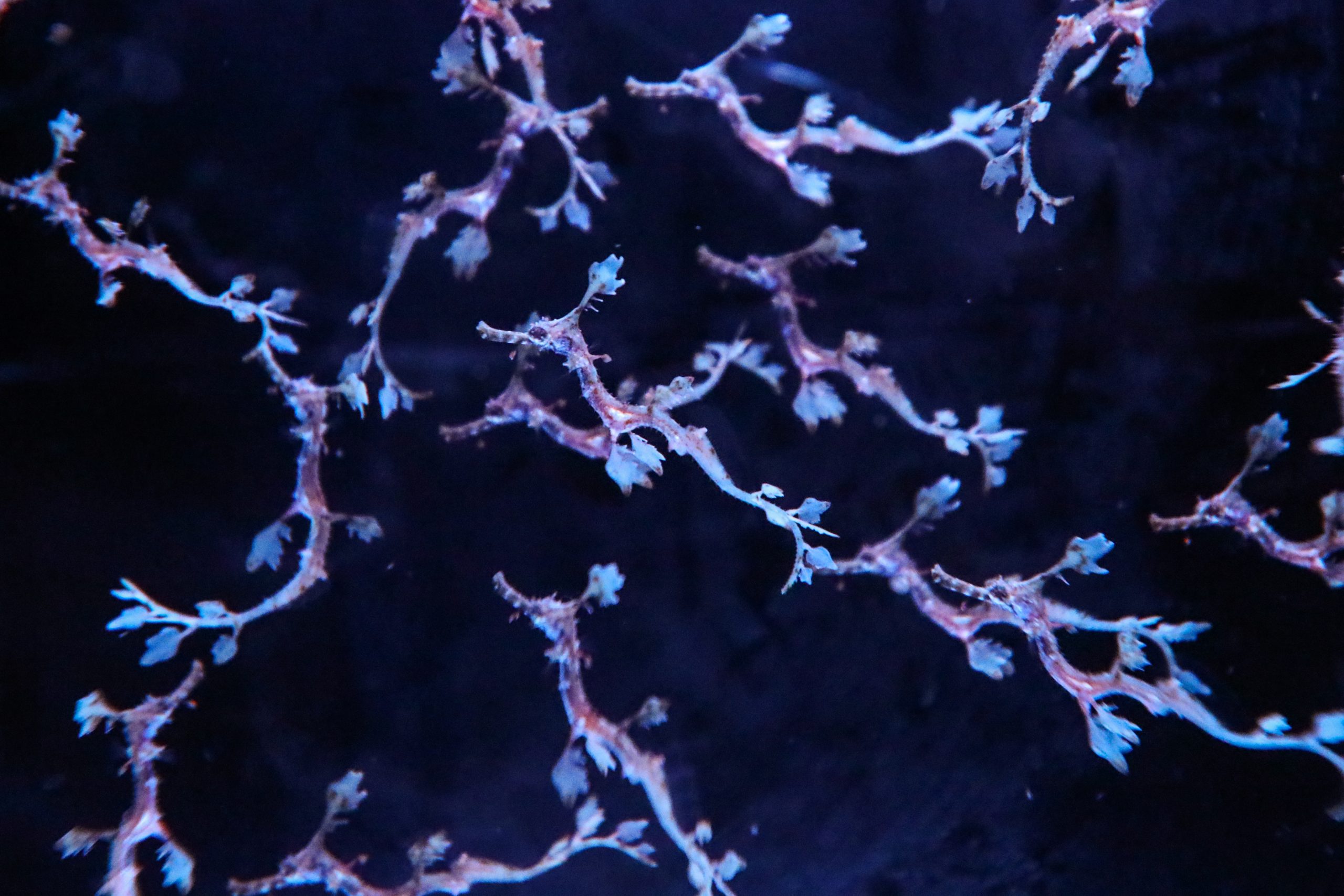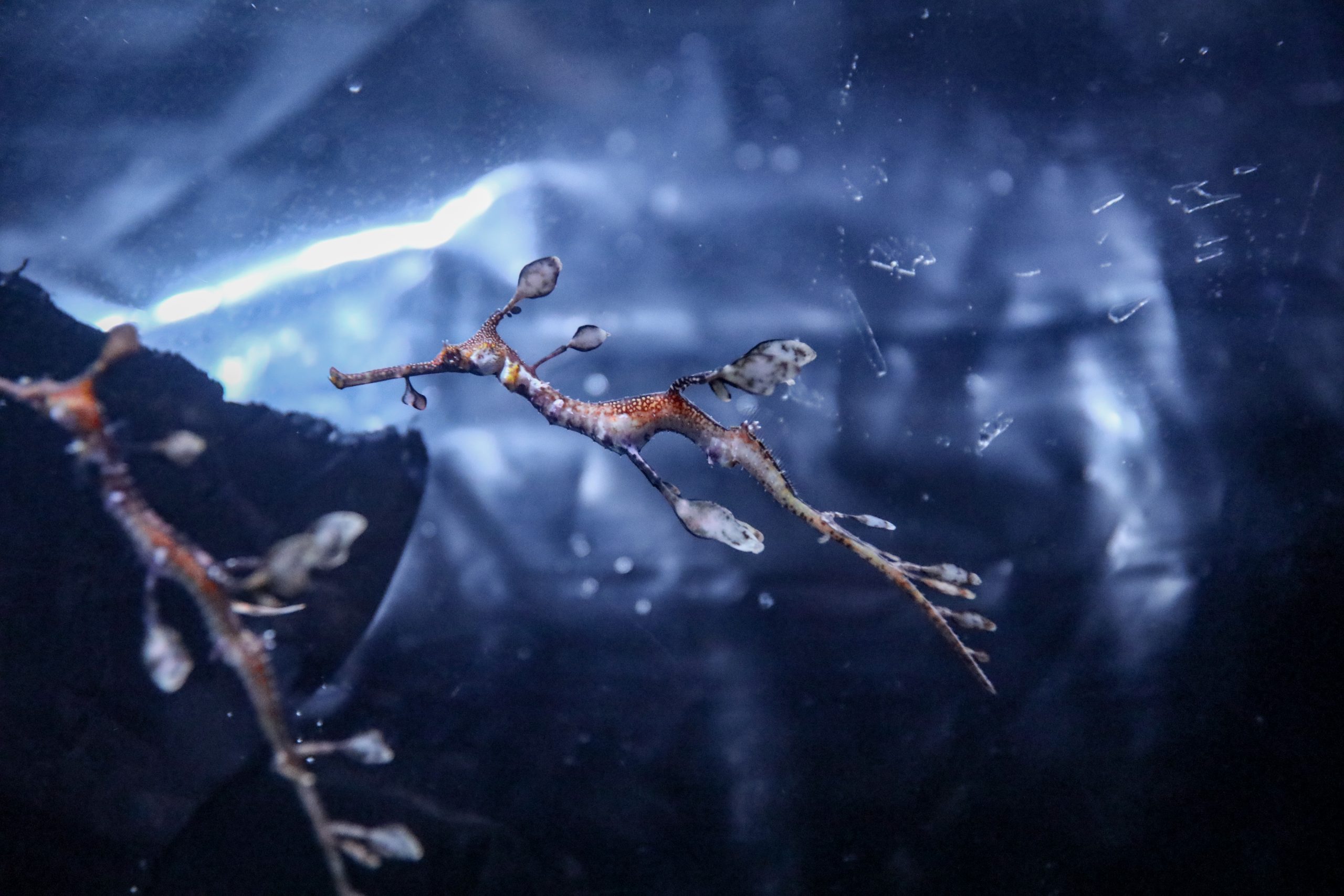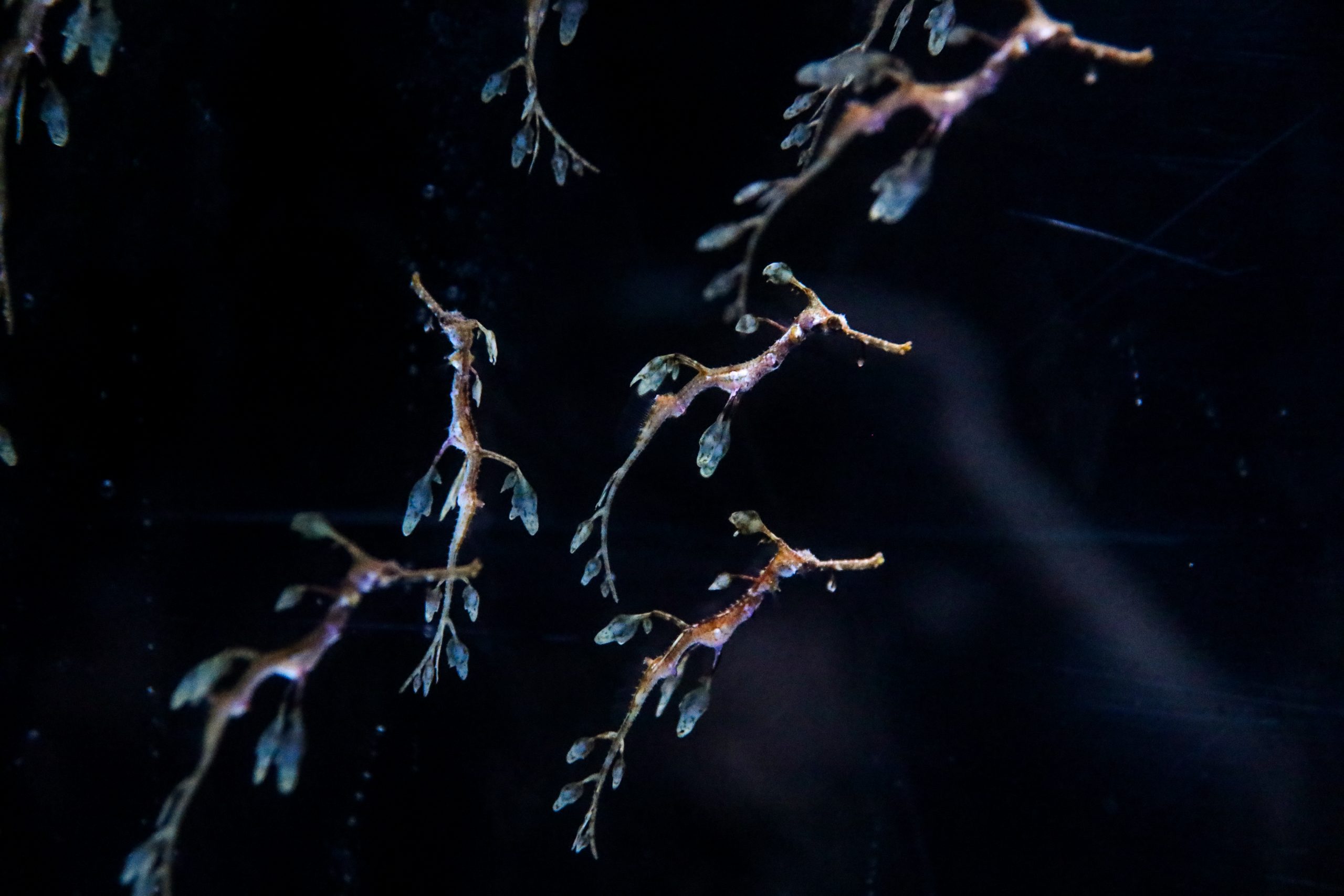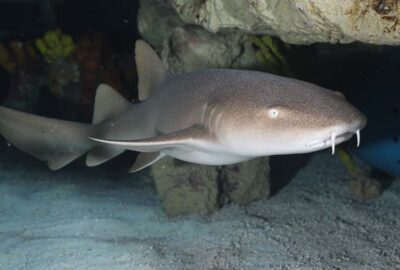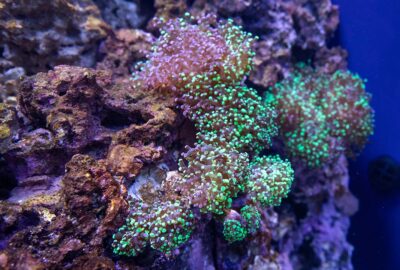Construction Update: As we enhance the look and feel of the Aquarium and make structural improvements to the penguin exhibit, some exhibits are temporarily closed, and the penguins are off exhibit until February 13. Learn more.
In a First, Baby Seadragons Hatched at the Aquarium
By New England Aquarium on Wednesday, March 15, 2023

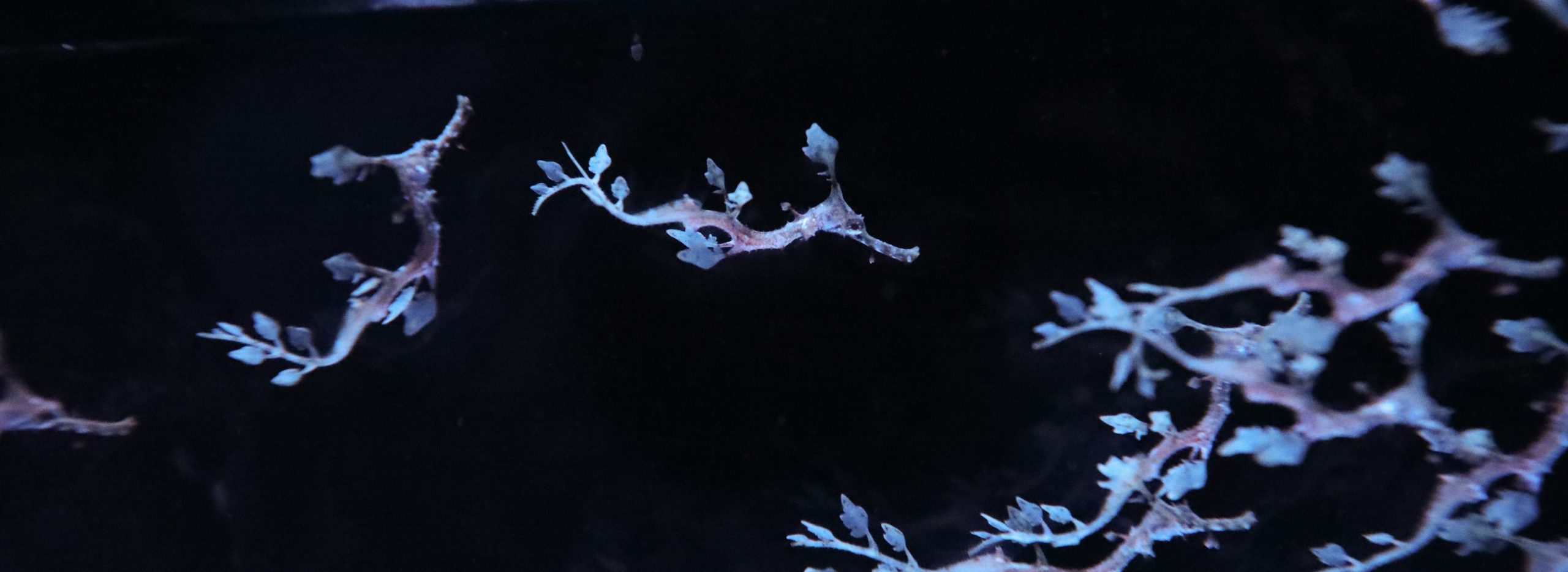
This past spring, for Father’s Day, Galleries Manager Jeremy Brodt penned a card for one of the hardest-working dads at the Aquarium—a male seadragon carrying a clutch of dozens of eggs. Breeding our seadragons was a goal many years in the making, and the tiny hatchlings—at just over two centimeters in length—would require lots of careful attention to help them thrive.
“Newly hatched seadragons are delicate and demanding,” said Allison Waltz-Hill, a senior aquarist who was part of the team that cared for the adult seadragon and his offspring. “For the first several weeks, my days revolved around their care.”
Both leafy and weedy seadragons are endemic to the cool waters along Australia’s southern coast, meaning that’s the only place they’re found in the wild. Raising them in aquariums can help protect seadragon populations and make it possible to continue showcasing them to the public. But it’s a difficult process, and only a few institutions worldwide have had any success.
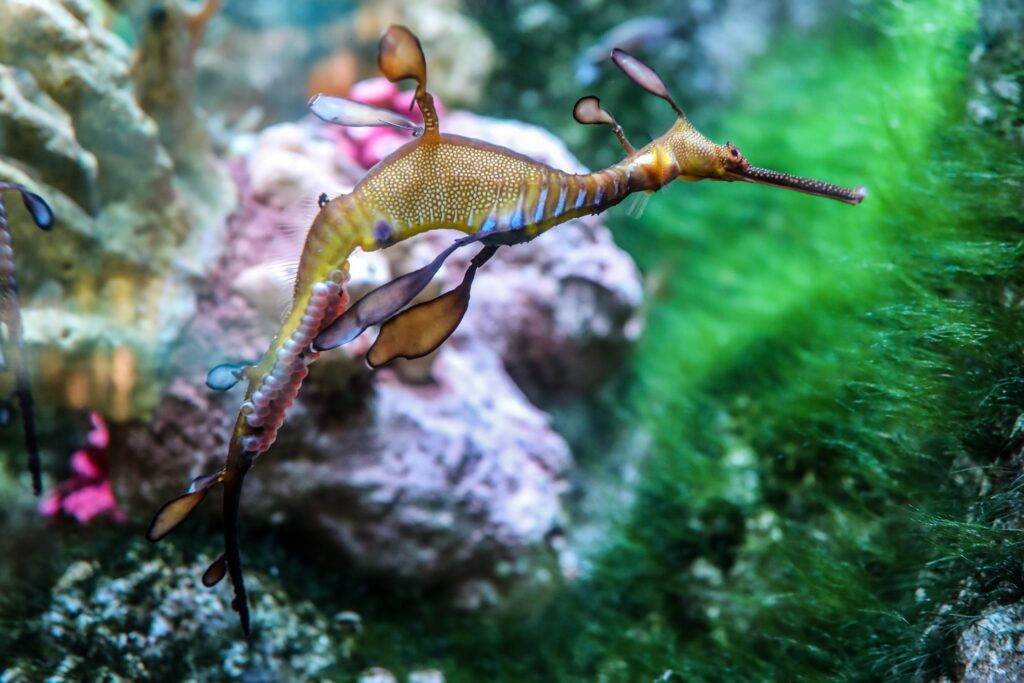
Part of the difficulty stems from the seadragons’ elaborate mating ritual in which they mirror one another, moving together as they gracefully spin upwards through the water. While it looks like a dance, what’s happening is that the female seadragon is transferring her eggs to a patch on the underside of the male’s tail, where he’ll fertilize and then carry the eggs until they hatch. If the “dance” is interrupted, the eggs may drop or end up unfertilized, resulting in a failed mating.
Before the successful egg transfer, Jeremy and the team studied seadragon behavior and worked to create the ideal conditions for a successful egg transfer. That included adding a special taller tank at our Quincy Animal Care Facility. The team believed it would provide the necessary vertical space for the seadragons to complete their mating dance. The fact that a pair of seadragons in the exhibit at the Aquarium completed an egg transfer was unexpected—but a welcome surprise.
After over a decade of trying and hoping, we were shocked but elated to see a male with a brood of eggs on his tail.
To keep the new seadragon dad from accidentally bumping the eggs off his tail, the team moved the seadragon behind the scenes. There, they could carefully monitor him and the eggs as they incubated.
/
Hatching started mid-July, about a month and a half after the initial egg transfer. As new hatchlings emerged, Jeremy, Allison, and the team would gently remove the new seadragons, placing them into a tank stocked with highly nutritious food. Feeding the tiny babies was one of the biggest challenges due to their size.
The hatchlings ate copepods and baby brine shrimp for the first couple of days but had to be transitioned quickly to day-old, very tiny, mysis shrimp in order to ensure adequate nutrition. As the seadragon babies grew, the team had to order increasingly larger mysis shrimp. This continued until the baby sea dragons were large enough to eat an adult mysis shrimp—which took about two to three months of growth.
After almost a year of growing up, the baby seadragons are about six inches long, and the team continues to monitor their development and well-being.
In the meantime, visitors to the Aquarium will be able to enjoy seeing the adult seadragons in their newly refurbished exhibit and watch the seadragon babies growing up on video behind the scenes. After much learning, experimenting, and hard work to get here, the team is excited to be able to share this story.
“This rare opportunity has provided us with an invaluable learning experience and the ability to contribute our experiences to further the collective knowledge and well-being of this species,” Allison said.

